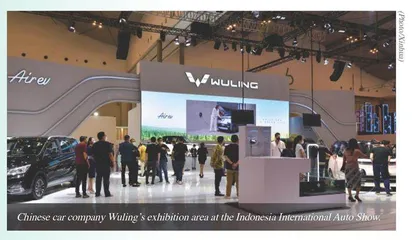Asia-Pacific Regional Economic Cooperation Under Global Value Chain Reshaping
作者: Zhang Jianping

Recent years have witnessed slower international trade growth and decelerating cross-border capital flows as a result of anti-globalization trend and the protectionist policies adopted by some countries. The global value chain (GVC), facing the threat of “decoupling and severing”, is becoming localized, shortened and fragmented in some regions. The Asia-Pacific region is a weighty powerhouse for global economic growth and also a region seeing rapid progress in trade and investment liberalization and facilitation, close GVC cooperation and the most vibrant development dynamics. The Regional Comprehensive Economic Partnership (RCEP), representing the largest free trade area in the world, came into effect in January 2022, which suggests that Asia-Pacific economic integration has made landmark progress. More than 50 bilateral and multilateral free trade agreements spearheaded by the RCEP and the Comprehensive and Progressive Agreement for Trans-Pacific Partnership (CPTPP) are now reshaping the value chains in the Asia-Pacific region and certainly will exert considerable impacts on economic cooperation in the Asia-Pacific region and even the adjustment and reshaping of global value chains.
Asia-Pacific Region is Moving up the Global Value Chain
The 21st century is known as the Asia-Pacific century. The region’s economic volume makes up 61% of the world’s total and its trade in goods and services accounts for 47% of the global total. China and ASEAN annually contribute to over 40% of world economic growth on average. With its massive production network based on GVC cooperation, East Asia is standing side by side with North America and Europe as the world’s three production network giants. As the COVID-19 pandemic sends shockwaves across the world, the Asia-Pacific region has provided new momentum for the entire world. As the East Asian economic circle with the RCEP as the core mechanism has formed, East Asia will see more remarkable endogenous economic growth and refined value chain cooperation system based on intra-regional trade and investment.
I. GVC System and the Impacts of “Three Pillars” Pattern on Global Development
Boosted by the General Agreement on Tariffs and Trade in the 1970s (which later became the World Trade Organization) and the international capital flows in the 1980s, a “North America-Europe-Asia” three-pillar GVC cooperation pattern has taken shape, with the United States, Germany and China at the center of each region. The international division of labor, shifting from the traditional horizontal pattern to the vertical division of labor based on specialization, stimulates economic growth in developing countries.
China and other BRICS members are still at the lower end of the GVC, while the United States, Germany and Japan remain at the top. In the future, propelled by the innovation-driven development model and in accordance with the “two-stage” strategic goals, China will probably nudge up to the middle-and-upper end of the GVC in 2035 and finally to the upper end in 2049.
In the post-COVID-19 era, GVC cooperation is the key approach to hold back the global economy from falling into recession and achieving recovery and growth. In view of the fact that the United States, China and Germany are far ahead of other countries in the proportion of goods and services’ added value in the GVC and take up core positions, China-US-Europe GVC cooperation is critical for the global economy to end stagflation and achieve sustainable development.
II. Asia-Pacific Region is Taking up an Increasingly Important Position in GVC Economic and Trade System
Since the inception of the Asia-Pacific Economic Cooperation (APEC), the Asia-Pacific region has gradually become a region with the most dynamic economy, the fastest growth of free trade and the most concentrated GVC distribution in the world. An Asian Development Bank (ADB) report highlights that the Asia-Pacific region has become the biggest contributor to global gross domestic product (GDP), reaching a 34.9% share in 2019 from 26.3% in 2000. In 2021, the APEC region’s GDP amounted to US$ 59 trillion, accounting for 62% of the global total; and its GDP growth rate reached 5.9%, far exceeding the world’s average and making the region the most powerful engine of global economic growth.
In terms of the value chain participation, the Global Value Chain Development Report 2019 jointly published by the World Trade Organization, the World Bank and the Organization for Economic Co-operation and Development (OECD) in 2019 showed that in 2017, Asia (especially East Asia) embraced an upward trend of GVC participation. For example, the share increased from 38.5% of Asia’s total forward complex GVC activities in 2000 to 43.9% in 2017 and from 39.6% to 46.2% of total backward complex GVC activities during the same period. This shows that Asia, especially East Asia, has seen more precise intra-regional division of labor and closer regional economic integration.
III. Asia-Pacific Region Sets a New Shining Example of Institutional Building for the World
RCEP, which came into effect and entered the implementation stage on January 1st, 2022, marks Asia-Pacific’s shining example in terms of institutional building. The RCEP member states are home to 2.27 billion people, with GDP accounting for around 33% of the world’s total and export volume making up around 30% of the world’s total. It is a free trade area covering the largest population and with the largest economic and trade scale in the world. The RCEP’s Rules of Origin governing trade in goods (that is, goods with 40% RCEP regional value addition are eligible to zero tariff treatment within the region) and the creative effect of intra-regional trade and investment will continuously strengthen the RCEP member’s GVC cooperation, accelerate regional economic integration with the world’s largest integrated market, and inject new impetus into global economic recovery.